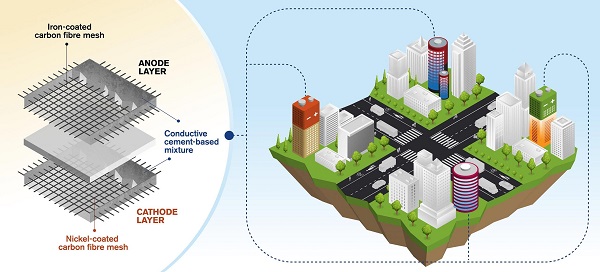 Friday, October 4, 2024
Friday, October 4, 2024  Friday, October 4, 2024
Friday, October 4, 2024 
I saw an interesting video on YouTube by Undecided with Matt Ferrell about batteries made from concrete. The video asked, “What if we could turn our houses and buildings themselves into batteries?”
Cement is highly pollutive and is a leading cause of greenhouse gas pollution — it may not be on the level of the transportation industry, but it’s still very high.
Grid operators are investing billions of dollars into lithium-ion batteries. Large-scale energy storage systems are expected to increase 100 times by 2030 but lithium is 2,000 times less abundant than iron. This doesn’t mean lithium’s not abundant (it is), but it does mean iron is a huge potential resource for storage systems.
Matt noted that although lithium-ion batteries have vastly decreased in cost over the past decade, some experts still think that there will be struggles to make the needed improvements in cost, energy density, and charging speed.
This is why, he emphasized, to keep looking for feasible alternatives. One such alternative that Matt based his video on was a prototype developed by the Chalmers University of Technology in Sweden. The prototype they developed was of a rechargeable cement-based battery. The battery has an average energy density of 7 watt-hours per square meter or around 0.7 watt-hours per square foot. It also holds 10 times more power than previously produced cement batteries. And this one is the first rechargeable cement batteries in the world that has been proven at lab scale.
The idea was to integrate concrete batteries into solar panel systems to store the extra energy generated by solar. Matt noted that this invention could have another innovative use case.
The potential of this invention is its storage capacity scale-up. that’s because you could incorporate this functional concrete into the structure of multi-story buildings to store large volumes of energy.
Keep reading on CleanTechnica.com